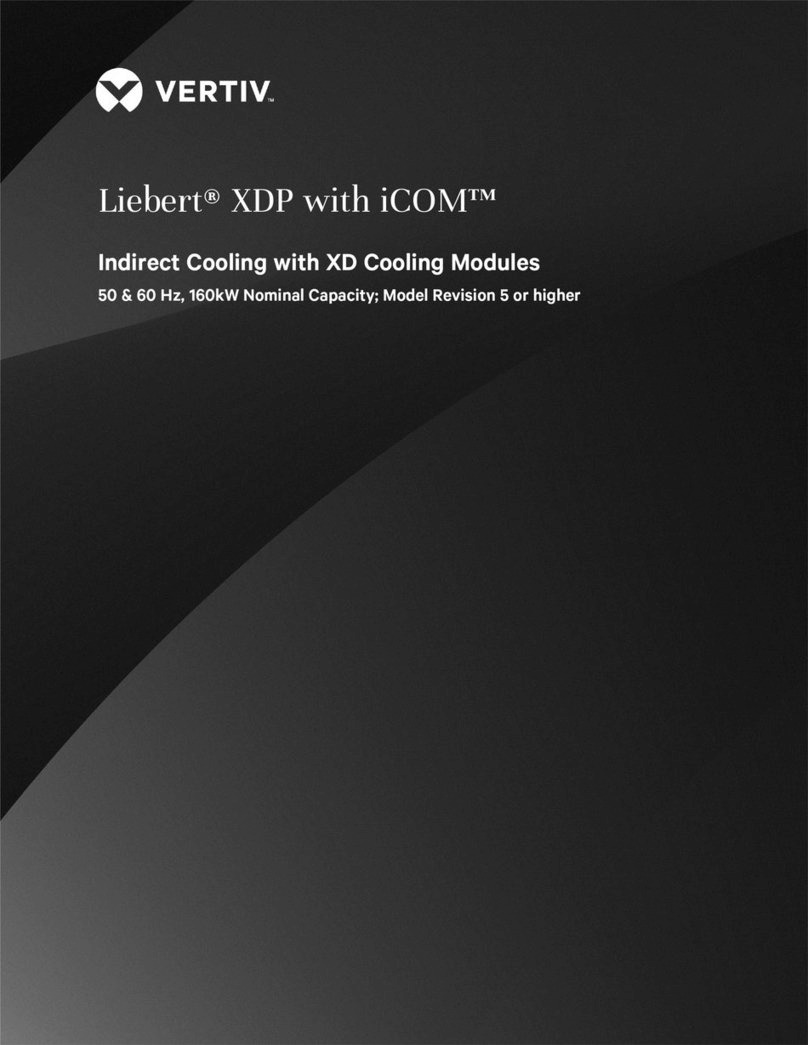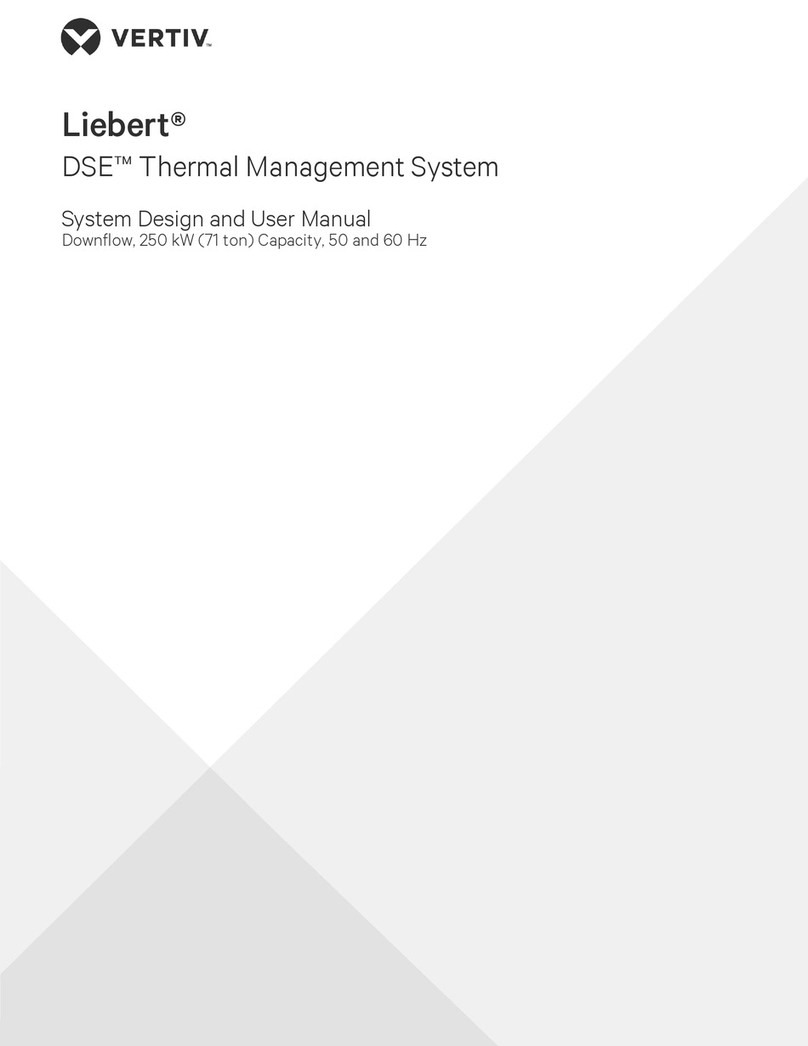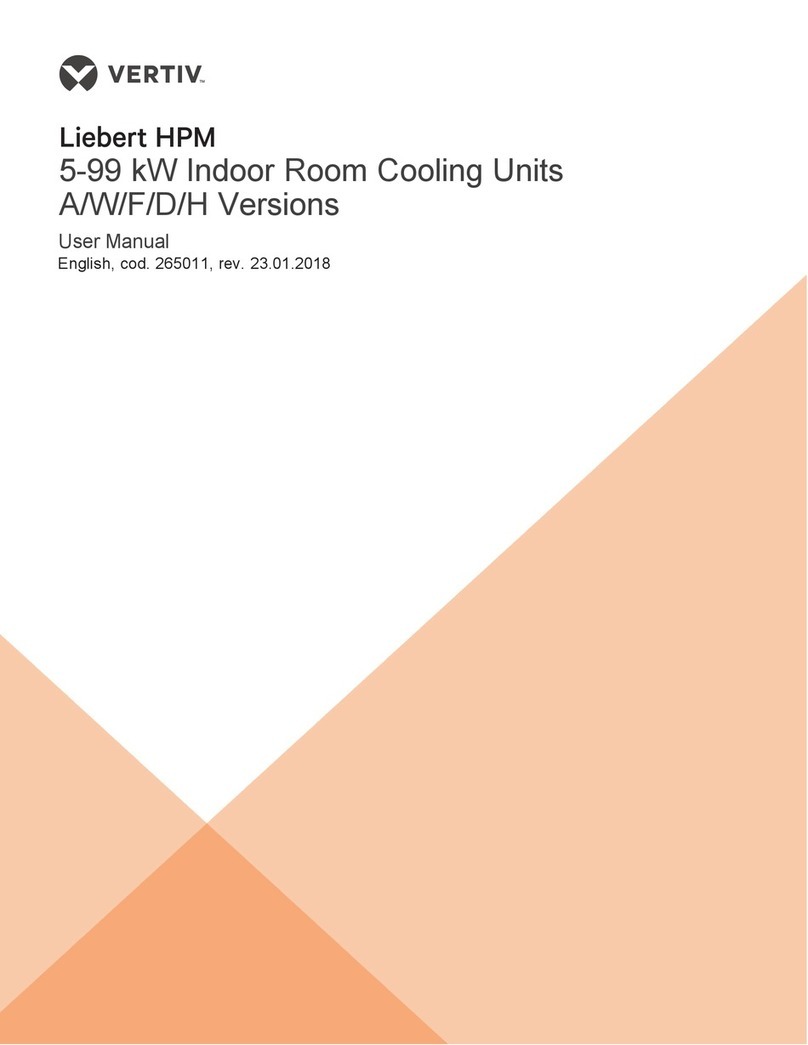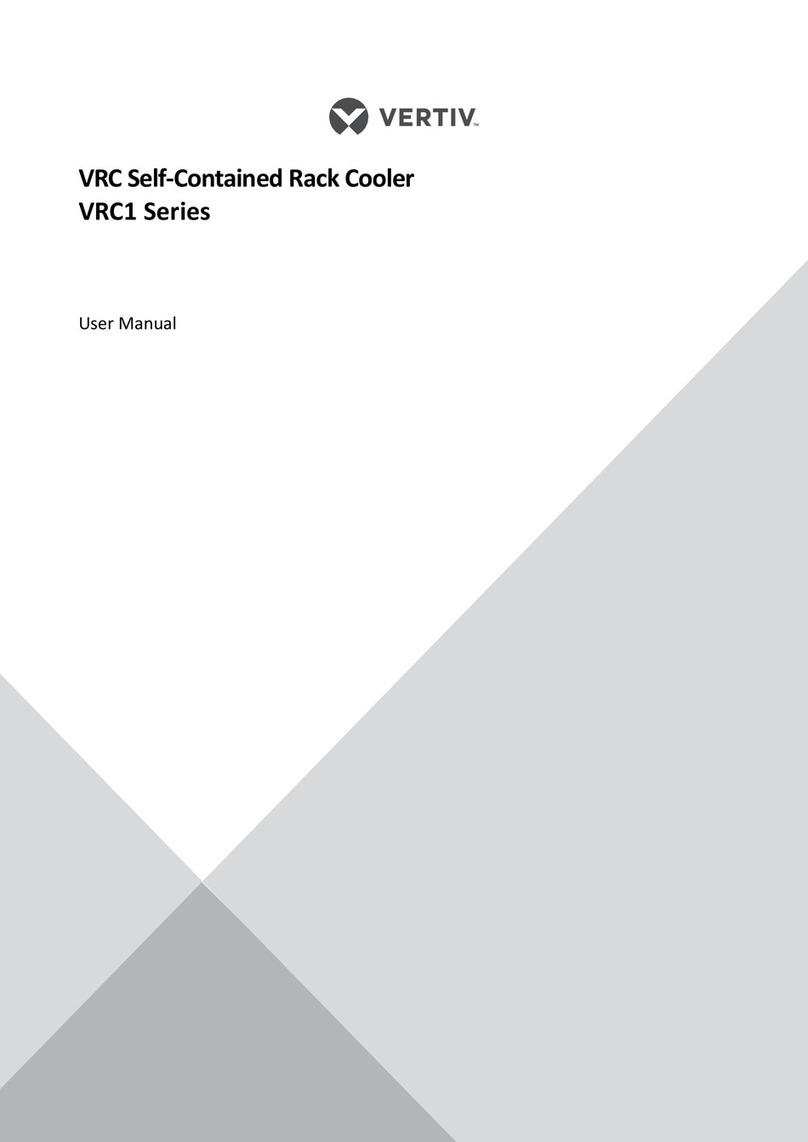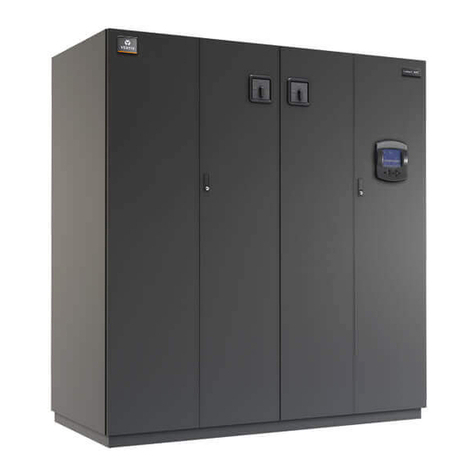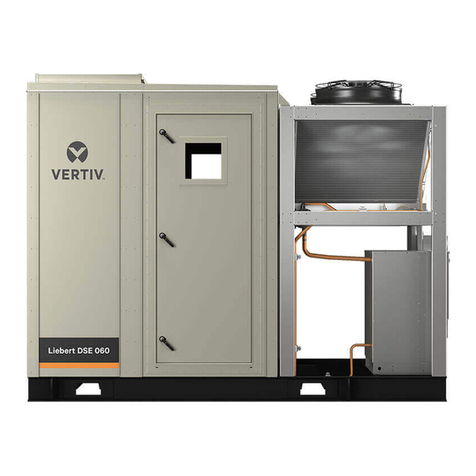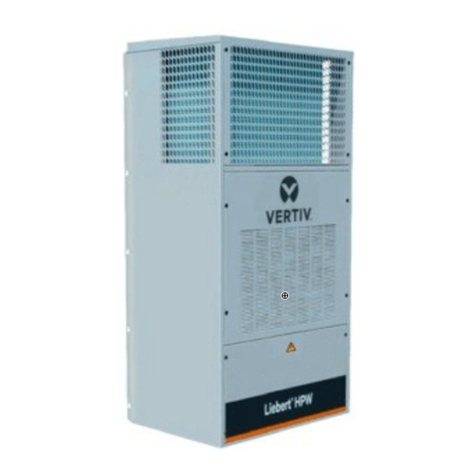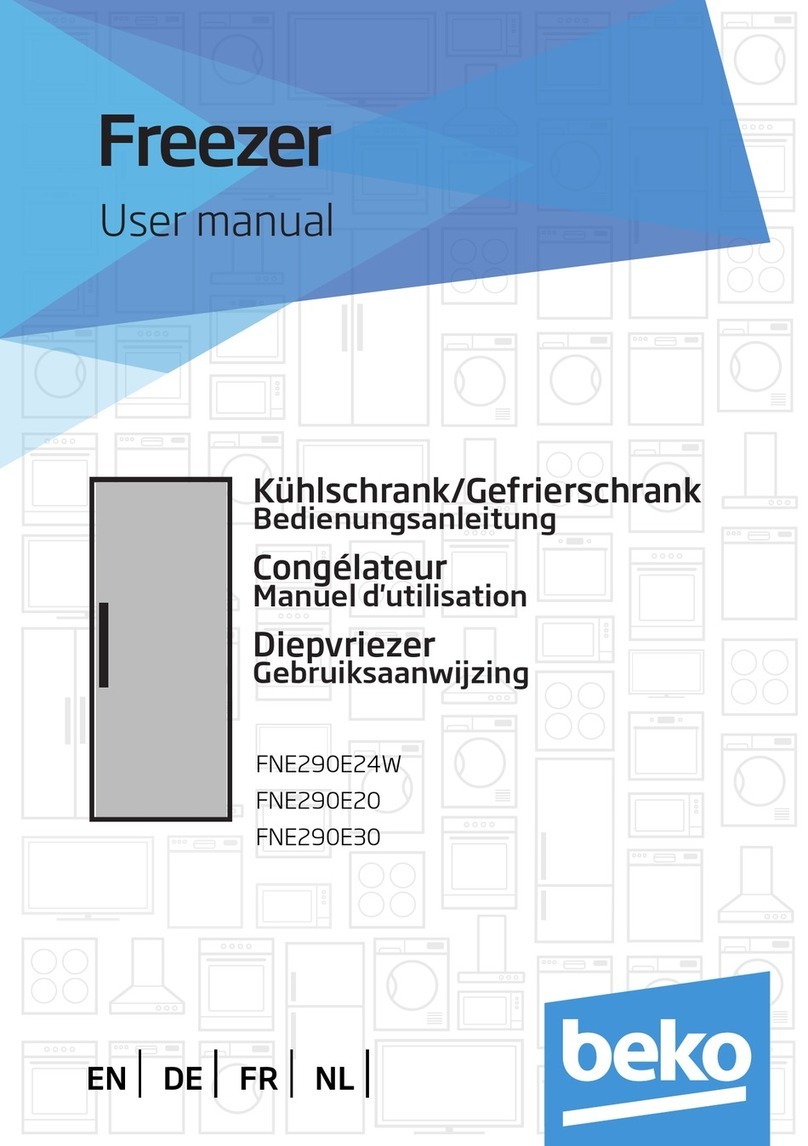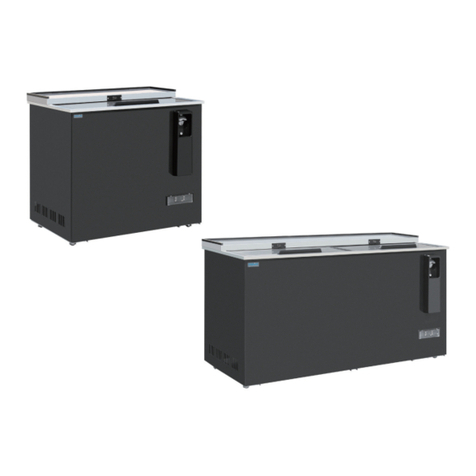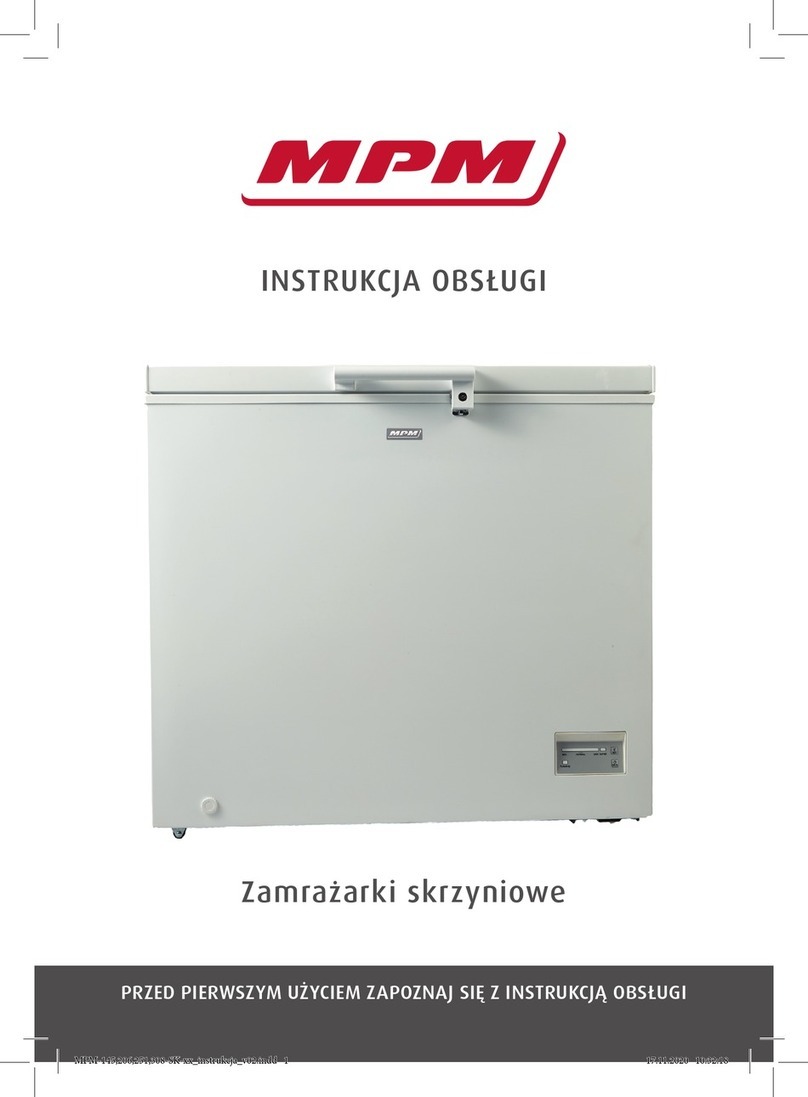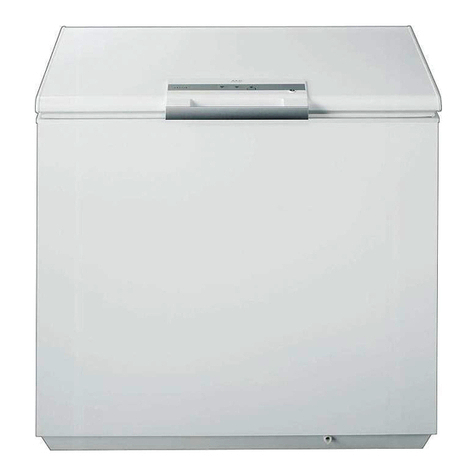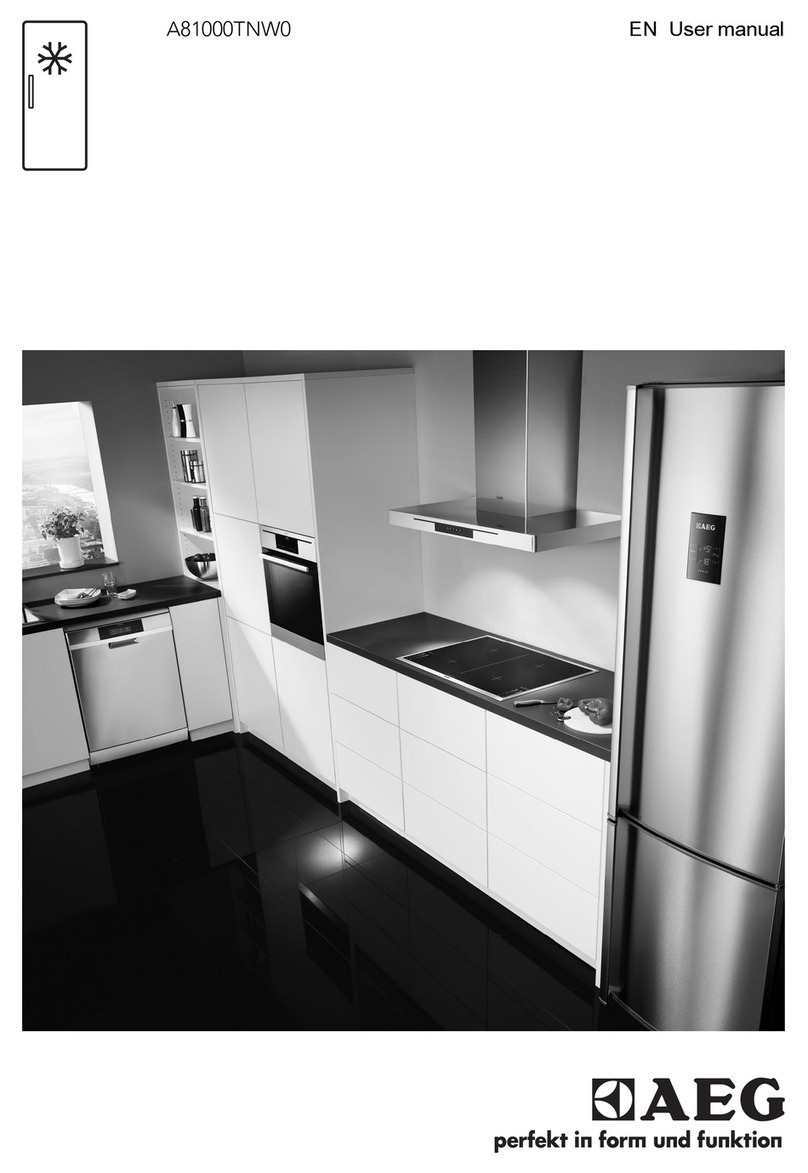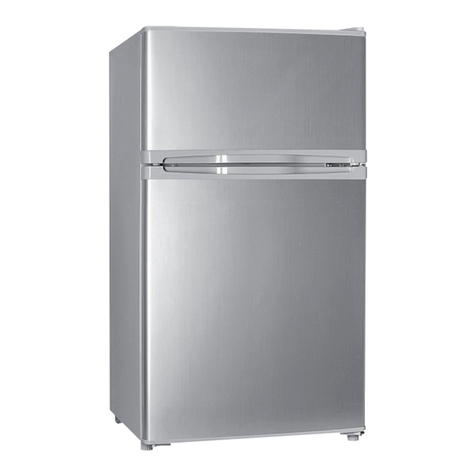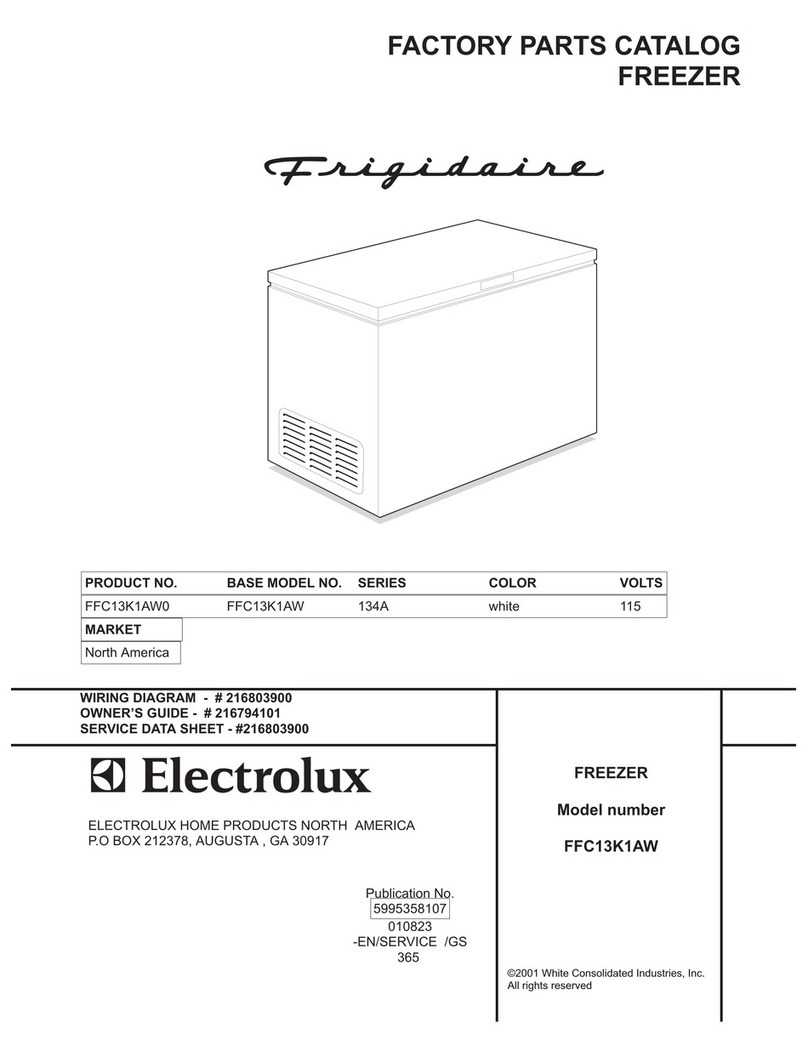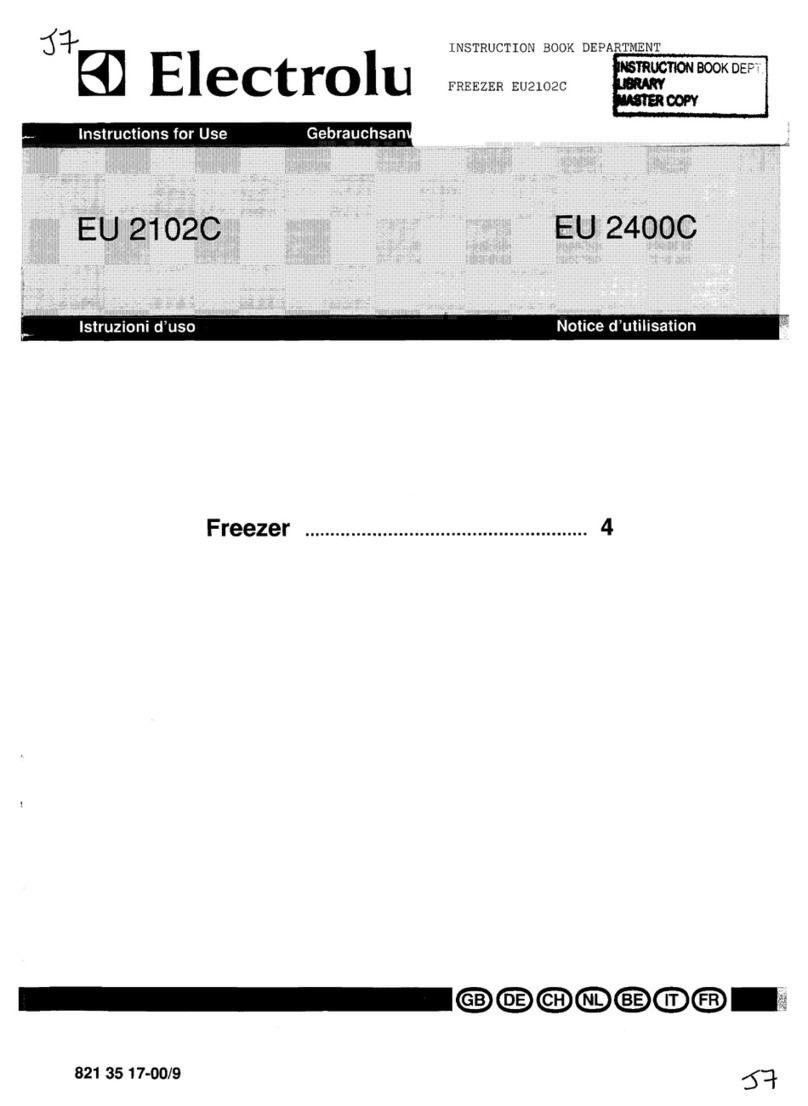
1.1 Model Nomenclature
Table 1.2 below, describes each digit of the model number.
1 2 3 4 5 6
V R C 1 0 0
Table 1.1 VRC Model-number Example
Digit and Description
Digits 1, 2, 3 = Base unit
•VRC = Vertiv™ Rack Cooler
Digit 4 = System type
•1 = Self-contained cooling module
•2 = Split-system indoor cooling module
•3 = Split-system heat-rejection module
Digits 5, 6 = Power supply
•00 = 120V / 1ph / 60Hz
•01 = 208/230V / 1 ph / 60 Hz
Table 1.2 Model-number Digit Definitions
1.2 Specifications
Table 1.3 below, lists the mechanical and electrical specifications of the VRC by model.
Model: VRC100 VRC101
Cooling capacity, kW 0.9 to 3.3 0.9 to 3.3
Air volume, CFM (CMH) 450 (770) 465 (790)
Unit dimensions W xDx h, in.(mm) 17.4x38.5x17.28 (442x978x439)
Voltage, VAC L+N+G , 120 L1+L2+G, 208/230
Frequency, Hz 60
Color EG7021 (black)
System-protection grade IP20
Unit weight, lb (kg) 143.4 (65)
Shipping weight, lb (kg) 218.3 (99)
Noise level <66dB(A)
Table 1.3 Specifications by Model Number
1 Vertiv™ VRC 5
